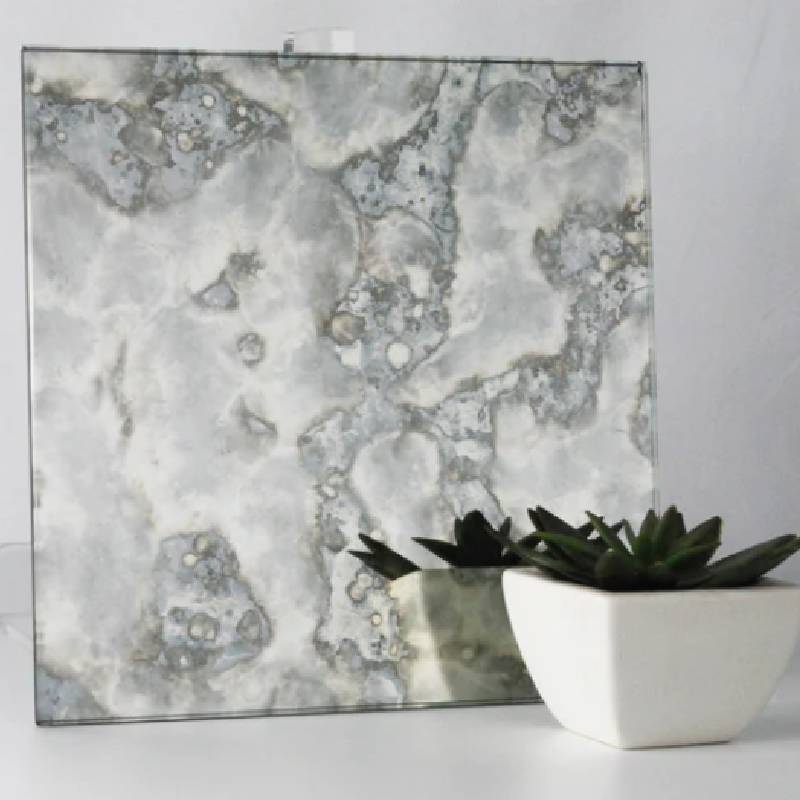The Unseen Intricacies of Obscure Wire Glass
In the world of architectural and interior design, certain materials serve as unsung heroes, quietly revolutionizing the way we perceive and interact with space. One such material is obscure wire glass. While it may not dominate headlines or capture the imagination like more glamorous counterparts in the glass family, its unique characteristics make it an essential element in various applications. This article delves into the history, properties, uses, and the aesthetic value of obscure wire glass.
History and Manufacturing
Obscure wire glass, often referred to simply as wire glass, has a storied history dating back to the late 19th century. It was originally designed for safety; the inclusion of wire mesh between glass layers increased its resistance to breakage, making it an ideal choice for public buildings like schools and hospitals. The manufacturing process involves embedding a grid of metal wire into the glass during the production phase, a technique that imparts strength and durability to the final product.
The obscure aspect of this glass comes from its textured surface, which typically contains patterns or ripples that distort light and images passing through. This characteristic not only enhances the aesthetic appeal but also obscures visibility. Thus, obscure wire glass offers a perfect balance of functionality and visual intrigue.
Properties
One of the most defining properties of obscure wire glass is its strength. The embedded wire mesh provides resistance against impacts, making it a popular choice for doors, windows, and partitions in environments that demand safety without compromising on light penetration. Additionally, the textured surface can diffuse light, creating a soft, ambient glow rather than harsh, direct illumination. This quality is particularly valued in spaces where glare reduction is essential, such as offices or healthcare facilities.
Moreover, obscure wire glass turns out to be a practical solution in fire-rated applications. When exposed to flames, the glass helps prevent the spread of fire from one area to another, acting as a barrier that can buy valuable time in emergencies. This makes it a fundamental component in many commercial and industrial settings where fire safety is paramount.
obscure wire glass
Applications in Modern Design
The versatility of obscure wire glass makes it suitable for a wide range of applications in contemporary architecture and design. In residential settings, it can be used effectively in bathroom windows, allowing natural light while ensuring privacy. It serves a similar purpose in offices, enabling light to filter through conference rooms or shared spaces without compromising confidentiality.
In commercial spaces, the glass finds its place in retail environments and public buildings, where transparency and safety need to coexist. For instance, it can be employed in storefronts, allowing customers to view products unobstructed while providing security against breakage and intrusion.
Furthermore, the aesthetic appeal of obscure wire glass can enhance interior design. It can be integrated into decorative panels, lighting fixtures, or even as artistic elements in screens and dividers, contributing a unique texture and visual depth to spaces. Designers appreciate its ability to add interest without overwhelming the existing decor, making it a subtle yet impactful choice.
A Sustainable Choice
In an age where sustainability has become a guiding principle in material selection, obscure wire glass stands out as an environmentally friendly option. Its durability means that it requires less frequent replacement compared to conventional glass, thereby conserving resources over time. Additionally, the ability to produce it using recycled materials aligns with eco-friendly practices, making it a responsible choice for architects and builders aiming to reduce their carbon footprint.
Conclusion
Obscure wire glass may not be the first material that comes to mind when considering architectural design, but its multifaceted properties and applications speak to its inherent value. By blending safety, aesthetics, and functionality, it plays a critical role in shaping our built environment. As modern design continues to evolve, the unique qualities of obscure wire glass will undoubtedly maintain its relevance, ensuring that this unsung hero continues to enrich our spaces for years to come.
 Afrikaans
Afrikaans  Albanian
Albanian  Amharic
Amharic  Arabic
Arabic  Armenian
Armenian  Azerbaijani
Azerbaijani  Basque
Basque  Belarusian
Belarusian  Bengali
Bengali  Bosnian
Bosnian  Bulgarian
Bulgarian  Catalan
Catalan  Cebuano
Cebuano  Corsican
Corsican  Croatian
Croatian  Czech
Czech  Danish
Danish  Dutch
Dutch  English
English  Esperanto
Esperanto  Estonian
Estonian  Finnish
Finnish  French
French  Frisian
Frisian  Galician
Galician  Georgian
Georgian  German
German  Greek
Greek  Gujarati
Gujarati  Haitian Creole
Haitian Creole  hausa
hausa  hawaiian
hawaiian  Hebrew
Hebrew  Hindi
Hindi  Miao
Miao  Hungarian
Hungarian  Icelandic
Icelandic  igbo
igbo  Indonesian
Indonesian  irish
irish  Italian
Italian  Japanese
Japanese  Javanese
Javanese  Kannada
Kannada  kazakh
kazakh  Khmer
Khmer  Rwandese
Rwandese  Korean
Korean  Kurdish
Kurdish  Kyrgyz
Kyrgyz  Lao
Lao  Latin
Latin  Latvian
Latvian  Lithuanian
Lithuanian  Luxembourgish
Luxembourgish  Macedonian
Macedonian  Malgashi
Malgashi  Malay
Malay  Malayalam
Malayalam  Maltese
Maltese  Maori
Maori  Marathi
Marathi  Mongolian
Mongolian  Myanmar
Myanmar  Nepali
Nepali  Norwegian
Norwegian  Norwegian
Norwegian  Occitan
Occitan  Pashto
Pashto  Persian
Persian  Polish
Polish  Portuguese
Portuguese  Punjabi
Punjabi  Romanian
Romanian  Russian
Russian  Samoan
Samoan  Scottish Gaelic
Scottish Gaelic  Serbian
Serbian  Sesotho
Sesotho  Shona
Shona  Sindhi
Sindhi  Sinhala
Sinhala  Slovak
Slovak  Slovenian
Slovenian  Somali
Somali  Spanish
Spanish  Sundanese
Sundanese  Swahili
Swahili  Swedish
Swedish  Tagalog
Tagalog  Tajik
Tajik  Tamil
Tamil  Tatar
Tatar  Telugu
Telugu  Thai
Thai  Turkish
Turkish  Turkmen
Turkmen  Ukrainian
Ukrainian  Urdu
Urdu  Uighur
Uighur  Uzbek
Uzbek  Vietnamese
Vietnamese  Welsh
Welsh  Bantu
Bantu  Yiddish
Yiddish  Yoruba
Yoruba  Zulu
Zulu 

